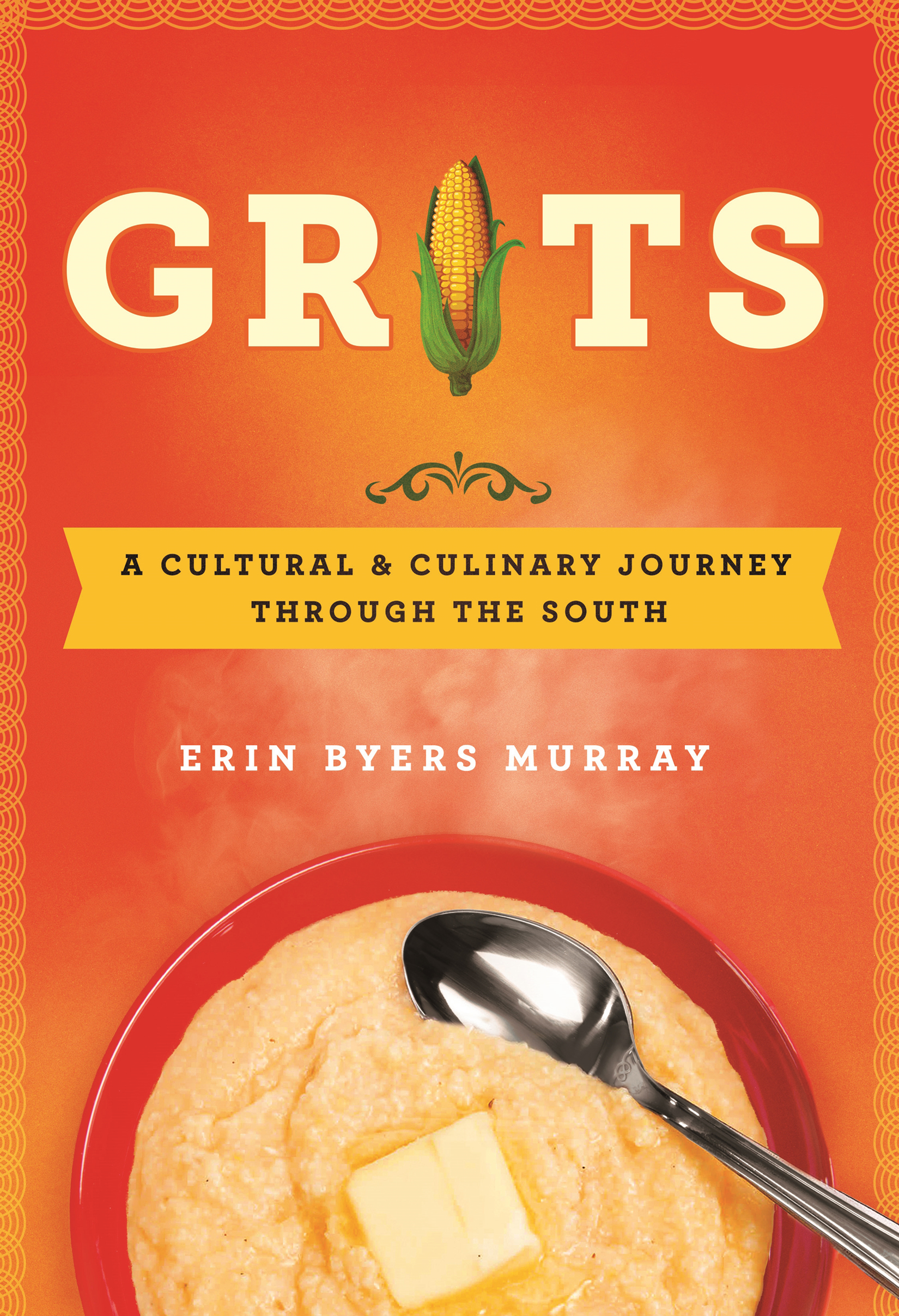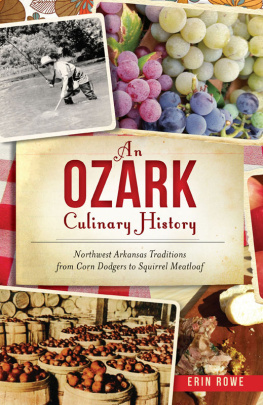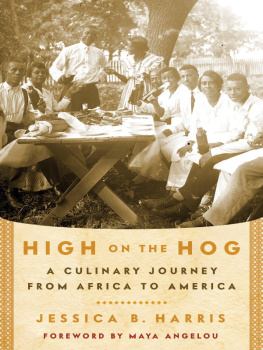Erin Byers Murray - Grits: A Cultural and Culinary Journey Through the South
Here you can read online Erin Byers Murray - Grits: A Cultural and Culinary Journey Through the South full text of the book (entire story) in english for free. Download pdf and epub, get meaning, cover and reviews about this ebook. year: 2018, publisher: St. Martin’s Press, genre: Science. Description of the work, (preface) as well as reviews are available. Best literature library LitArk.com created for fans of good reading and offers a wide selection of genres:
Romance novel
Science fiction
Adventure
Detective
Science
History
Home and family
Prose
Art
Politics
Computer
Non-fiction
Religion
Business
Children
Humor
Choose a favorite category and find really read worthwhile books. Enjoy immersion in the world of imagination, feel the emotions of the characters or learn something new for yourself, make an fascinating discovery.

- Book:Grits: A Cultural and Culinary Journey Through the South
- Author:
- Publisher:St. Martin’s Press
- Genre:
- Year:2018
- Rating:3 / 5
- Favourites:Add to favourites
- Your mark:
- 60
- 1
- 2
- 3
- 4
- 5
Grits: A Cultural and Culinary Journey Through the South: summary, description and annotation
We offer to read an annotation, description, summary or preface (depends on what the author of the book "Grits: A Cultural and Culinary Journey Through the South" wrote himself). If you haven't found the necessary information about the book — write in the comments, we will try to find it.
Grits: A Cultural and Culinary Journey Through the South — read online for free the complete book (whole text) full work
Below is the text of the book, divided by pages. System saving the place of the last page read, allows you to conveniently read the book "Grits: A Cultural and Culinary Journey Through the South" online for free, without having to search again every time where you left off. Put a bookmark, and you can go to the page where you finished reading at any time.
Font size:
Interval:
Bookmark:


The author and publisher have provided this e-book to you for your personal use only. You may not make this e-book publicly available in any way. Copyright infringement is against the law. If you believe the copy of this e-book you are reading infringes on the authors copyright, please notify the publisher at: us.macmillanusa.com/piracy.
This book is dedicated to Charlie & Maggie.
May your lives be rich with love, stories, and good food.
My story doesnt start with grits. Although I was born in Augusta, Georgia, I grew up for the most part living outside the Southmore than thirty years in places where grits were not a thing. I ate grits now and then as a kid but, unlike scores of folks in the South and beyond, I cant claim to have been raised on grits.
Ive since come to appreciate them, just as Ive come to better understand and appreciate the South. When I set out to write this book, I put myself on an intentional quest to do both. Along the way, I met corn farmers, seed savers, food writers, millers, grit packers, home cooks, historians, and Southern chefs who all helped me understand that, like many foods, grits help tell a story of the South. Its a story that is not just about a pile of food on a plate. It goes deeper. Its at once joyful, sustaining, delicious, divisive, painful, and funny.
Grits reflect certain traits that I love about the Souththey can be a simple celebration of humble, home-kitchen cooking or they can be dressed up, rethought, and revamped, interpreted into a more modern rendition. But grits also reveal storylines of the Souths most conflicted realitiesthey are intertwined with the regions history of genocide and slavery and the resulting racial, cultural, class, and gender disparities that still exist.
I returned to the South to make Nashville my home in 2012, after longing for it for almost a decade. That is not an uncommon thing. Many people Ive met and read about since moving from Boston to Nashville share my story: We left the Southwhether pushed or pulled for reasons out of our control, like me, or driven by the urge to break free, or by the calling of opportunity or the desire to traveland then found ourselves wanting to get back, to reconnect, to better understand this evolving region.
In many cases, I found that things had changed. Communities were larger, more colorful, more diverseand yet many still retained their Southern lilt, as though the newest arrivals, who hailed from countries near and far, had adopted, and were feeding off, the history, the culture, the soul they found rising up out of the heat and earth of their new Southern grounds.
Upon my return, I also found a region that was both welcoming and guarded, accepting of strangers but with a quiet wariness that floated between statements like What brought you back? and How are you liking it? It was as if Southerners were waiting to see whether I would adapt and fit inor whether I was better suited back where Id been. Part of me assumed that my assimilation back to the South would come easily, like picking up an old recipe card and knowing inherently when to add a little extra sugar. Instead, it was like tackling Escoffier without the translation.
My context, which had been shaped in youth and reframed over and over again by my own nostalgia for the placeand especially its foodswas out of whack. Before moving back and setting out on this project, I hadnt considered the many weights, measures, and historical realities that sit upon the Southern dishes I hold dear.
Grits can channel emotions and memories, and evoke tradition, no matter whether theyre found on restaurant menus, breakfast tables, at church picnics, cocktail parties, or community potlucks. And Ive learned that those who cook, eat, produce, write, and talk about grits are helping to shape an evolving story about the South.
The South is vast and diverse. Its made up of myriad micro regions, all of which are calling to be understood and celebrated in their own way. Nashville is now known for more than its neon call of honkytonks or the flaming crunch of hot chickentoday, it supports a dining scene that includes a growing number of Kurdish markets and Korean street food trucks alongside its meat and threes. Its hard to compare that evolution in any way to whats happening on the coast of South Carolina, where oyster beds are still tonged at sunrise and the foods of the Gullah Geechee are being acknowledged and celebrated. Theres long been a multicultural food scene supported by the stony streets of New Orleans, and in North Carolinas Piedmont region, an area known for its barbecue and boiled peanuts, the culture can now be better understood through its new abundance of farm-focused, chef-driven restaurants. Each of these micro regions is becoming better defined as we explore Southern foodand grits have played a role in many of those story lines.
When I first set out on this project I assumed there was a divide between those who ate grits and those who didntand that the divide ran about even with the same line drawn by Mason and Dixon. But as I researched and interviewed, ate, and wrote, I came to understand that grits dont line up with or against any physical or metaphorical boundaries or borders. Though they have roots in the South, theyre enjoyed in many other parts of the world. They make their way north and push far into the Midwest, up to the Northeast, and into the upper reaches of the continent. Indianans have a strong obsession for grits. Italy has polenta, which is a sister to grits. In her book Victuals , food writer and Appalachian foodways authority Ronni Lundy wrote about the Grits Line, saying that it has been moving steadily north in my lifetime; now even Canadians swear by the pleasures of eating them. (Its true. In 2013, the Toronto Star called for Canadians to try their grits drizzled with maple syrup, listing a recipe from the restaurant Rose and Sons.)
This book is not about boundaries, though. And its not just about grits, really. Mostly, its about peoples stories. Like so many foods, grits help people tell their stories. From home cooks to millers, corn farmers to chefs, those who opened up and shared with me their stories about grits divulged more than just talk of food. They spoke of their lives, their feelings, and their beliefs.
As I researched grits, I saw that the dish provided me with a lens through which I could better understand the place I had come to reclaim. There had been a number of big, thorny topics about the South that, upon moving back, I found myself trying to grapple with: the regions tumultuous history; old and new conversations about race; gender and where and how women find their place here; politics, both in government and in relation to food; and the changing culinary culture through which people across the South, including myself, identify themselves. By writing this particular book, about a dish I didnt fully understand, the story of this region has come into focus for me. And so, too, have my feelings about it.
Id like to note that there is a lot for anyone to say about gritseven if Id been given years to research the topic, Id never find an end to the rabbit holes. But these are the stories that spoke to me. They are different from the ones that another person coming from another angle, from another time, place, and cultural background, might have discovered. And some of them are only partially offered here. This book is not going to connect all the dots or paint a complete picture. In fact, I often feel that the research I did for this project raised far more questions than it answered. But with those questions came the joy of discoverywith every story offered, I was introduced to another angle and another viewpoint of the South to consider.
Font size:
Interval:
Bookmark:
Similar books «Grits: A Cultural and Culinary Journey Through the South»
Look at similar books to Grits: A Cultural and Culinary Journey Through the South. We have selected literature similar in name and meaning in the hope of providing readers with more options to find new, interesting, not yet read works.
Discussion, reviews of the book Grits: A Cultural and Culinary Journey Through the South and just readers' own opinions. Leave your comments, write what you think about the work, its meaning or the main characters. Specify what exactly you liked and what you didn't like, and why you think so.










